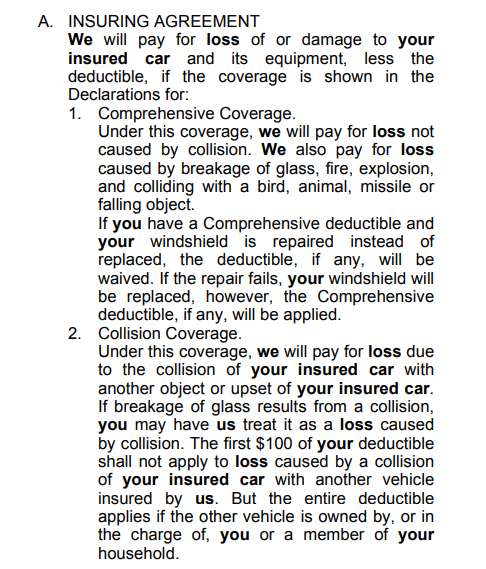All about Pacific Prime
All about Pacific Prime
Blog Article
Not known Details About Pacific Prime
Table of ContentsAn Unbiased View of Pacific PrimeGet This Report about Pacific PrimeThe Only Guide to Pacific PrimePacific Prime for Dummies
In a lot of states, the insurer is required to send you a copy of the adjustments to your policy. It is essential that you check out Recommendations or Motorcyclists so you comprehend just how your plan has actually altered and if the policy is still ample to meet your demands. To get a copy of your insurance coverage policy, please call your insurance coverage agent or company.
The Institute of Medicine (IOM) Board on the Effects of Uninsurance launches an extensive exam of proof that addresses the relevance of health insurance policy coverage with the magazine of this record. Coverage Matters is the initial in a collection of 6 records that will be provided over the next 2 years recording the reality and effects of having actually an estimated 40 million people in the USA without medical insurance coverage.

Pacific Prime Fundamentals Explained
The goal of this collection of studies is to refocus policy focus on a historical trouble. Following the longest economic development in American background, in 1999, an estimated one out of every 6 Americans32 million adults under the age of 65 and greater than 10 million childrenremains uninsured (Mills, 2000).

Ten percent of the populace make up 70 percent of health and wellness treatment expenses, a connection that has stayed continuous over the past 3 decades (Berk and Monheit, 2001) - group insurance plans. Therefore health insurance policy proceeds to offer the function of spreading out threat even as it progressively finances routine care. From the perspective of health treatment service providers, insurance coverage brought by their individuals assists secure a revenue stream, and communities gain from monetarily sensible and steady healthcare professionals and establishments
Government gives wellness insurance coverage to populaces whom the private market might not serve effectively, such as disabled and elderly persons, and populaces whose accessibility to health treatment is socially valued, such as youngsters and expecting females. The utmost ends of health insurance policy protection for the individual and neighborhoods, consisting of workplace areas of staff members and employers, are improved wellness end results and high quality of life.
The Buzz on Pacific Prime
Staff members rank wellness insurance first without a doubt in significance among all the advantages provided in the office (Salisbury, 2001). Although there have been large investments of individual and public funds to provide health and wellness insurance coverage, many individuals still have no protection. Despite comprehensive coverage of survey findings and health care study results, the public stays overwhelmed and mistaken about Americans without health and wellness insurance and the ramifications of doing not have insurance coverage.

Without inquiry, the intricacy of American healthcare financing systems and the wealth of resources of details contribute to the general public's complication and uncertainty regarding medical insurance data and their interpretation. This record and those that will certainly comply with purpose to distill and present in easily reasonable terms the substantial study that bears on inquiries of medical insurance coverage and its importance.
Fifty-seven percent of Americans questioned in 1999 thought that those without wellness insurance coverage are "able to obtain the care they need from physicians and healthcare facilities" (Blendon et al., 1999, p. 207). In 1993, when nationwide focus was concentrated on the troubles of the uninsured and on pending health care regulations, simply 43 percent of those surveyed held this idea (Blendon et al., 1999).

They likewise get less preventive services and are less likely to have normal take care of persistent conditions such as high blood pressure and diabetes. Persistent conditions can bring about costly and disabling difficulties if they are not well taken care of (Lurie et al., 1984; Lurie et al., 1986; Ayanian et al., 2000). One national survey asked more than 3,400 adults regarding 15 extremely major or morbid conditions.
Pacific Prime for Beginners
Additional evidence exists later on in this chapter in the conversation of insurance and accessibility to healthcare. https://justpaste.it/f0gjl. Individuals without health and wellness insurance policy are young and healthy and choose to do without protection. Nearly fifty percent (43 percent) of those checked in 2000 believed that people without health and wellness insurance are most likely to have illness than individuals with insurance policy
Citizens and policy makers in emphasis group discussions define those without insurance as youngsters that have the opportunity to be covered and feel they do not need it (Concierge Novelli, 2001). Contrasted to those with at the very least some personal protection, the uninsured are less likely to report being in superb or great health (Agency for Healthcare Research Study and Quality, 2001).
SOURCE: Center for Cost and click for source Funding Studies, Agency for Medical Care Study and High quality, based on MEPS data. Young person in between 19 and 34 are even more most likely to do not have medical insurance than any type of other age. This is chiefly due to the fact that they are much less typically qualified for employment-based insurance due to the nature of their task or their short tenure in it.
The perception that individuals without insurance have better-than-average health follows from puzzling the reasonably young age profile of the without insurance with the better health and wellness, generally, of younger persons. This obscures the web link in between health status and health and wellness insurance policy. For those without accessibility to work environment health and wellness insurance coverage, bad health is a potential barrier to buying nongroup coverage since such protection might be extremely priced, leave out preexisting problems, or be merely inaccessible.
Report this page